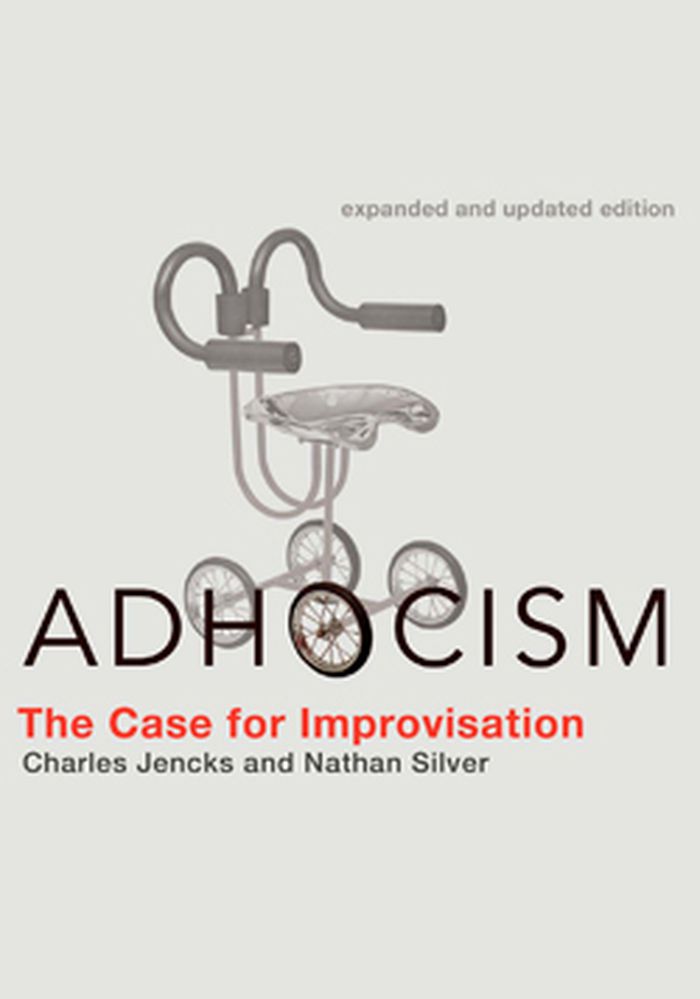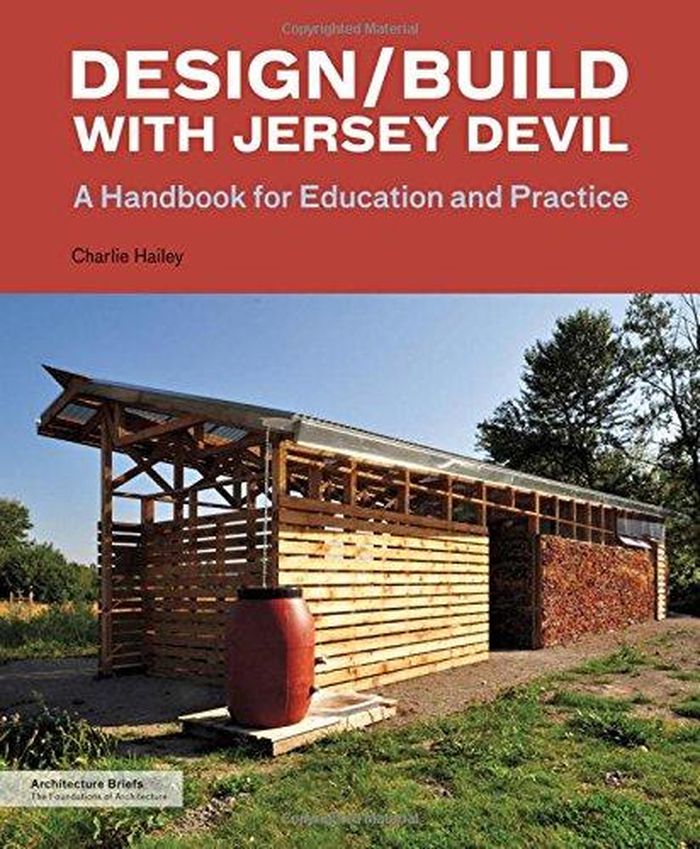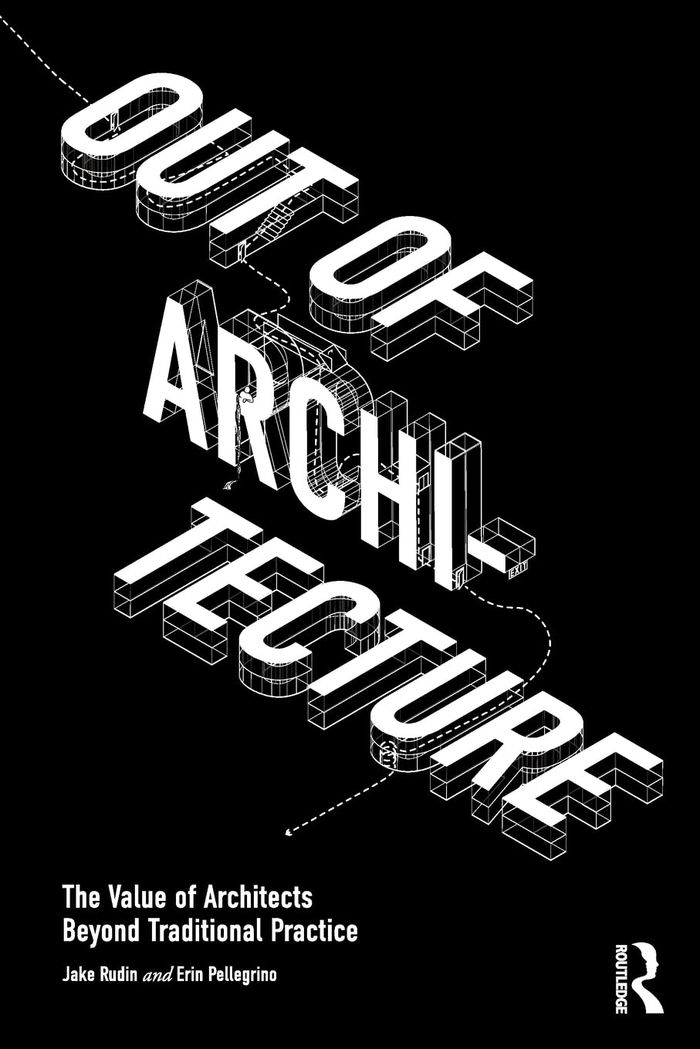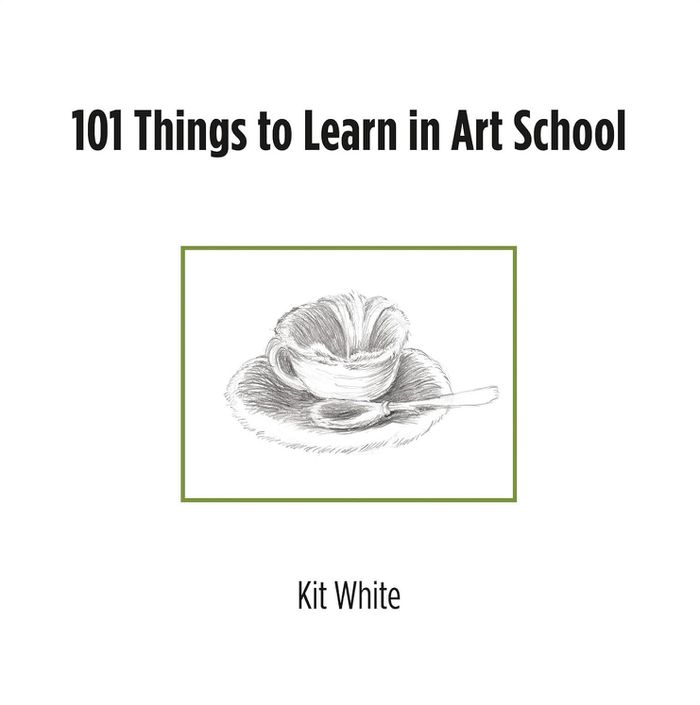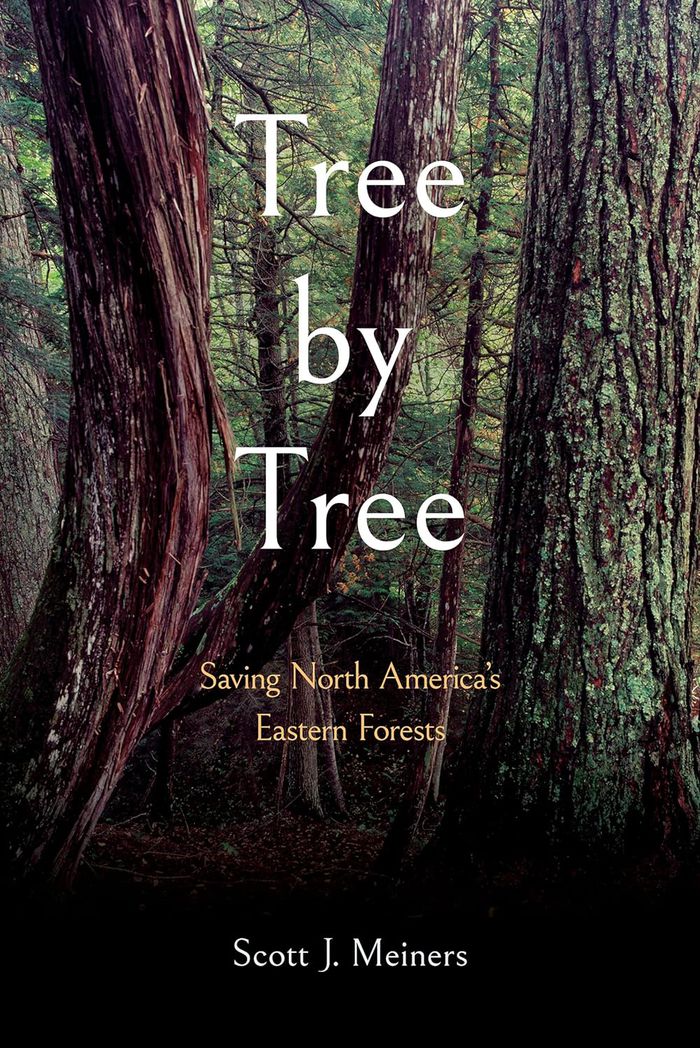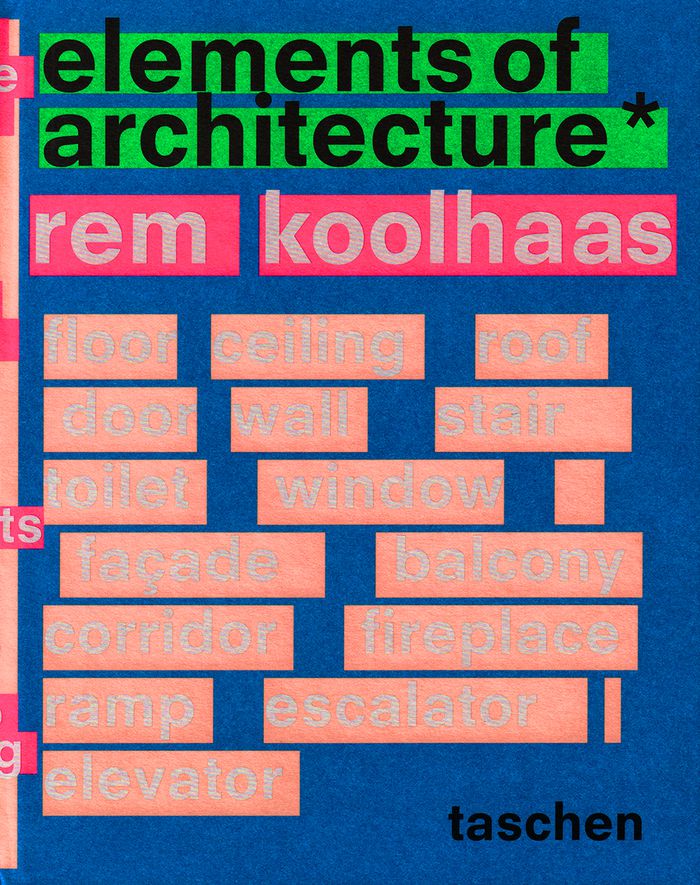$39.95
(available to order)
Summary:
Charles Jencks and Nathan Silver's book was a manifesto for a generation that took pleasure in doing things ad hoc, using materials at hand to solve real-world problems. The implications were subversive. Turned-off citizens of the 1970s immediately adopted the book as a DIY guide. The word "adhocism" entered the vocabulary, the concept of adhocism became part of the(...)
Adhocism: the case for improvisation
Actions:
Price:
$39.95
(available to order)
Summary:
Charles Jencks and Nathan Silver's book was a manifesto for a generation that took pleasure in doing things ad hoc, using materials at hand to solve real-world problems. The implications were subversive. Turned-off citizens of the 1970s immediately adopted the book as a DIY guide. The word "adhocism" entered the vocabulary, the concept of adhocism became part of the designer's toolkit, and "Adhocism" became a cult classic. Now "Adhocism" is available again, with new texts by Jencks and Silver reflecting on the past forty years of adhocism and new illustrations demonstrating adhocism's continuing relevance.
Architectural Theory
$41.99
(available to order)
Summary:
Modern environments are awash with pollutants churning through the air, from toxic gases and intensifying carbon to carcinogenic particles and novel viruses. The effects on our bodies and our planet are perilous. This is the first thorough study of the increasingly widespread use of digital technologies to monitor and respond to air pollution. It presents practice-based(...)
Citizens of worlds: Open-air toolkits for environmental struggle
Actions:
Price:
$41.99
(available to order)
Summary:
Modern environments are awash with pollutants churning through the air, from toxic gases and intensifying carbon to carcinogenic particles and novel viruses. The effects on our bodies and our planet are perilous. This is the first thorough study of the increasingly widespread use of digital technologies to monitor and respond to air pollution. It presents practice-based research on working with communities and making sensor toolkits to detect pollution while examining the political subjects, relations, and worlds these technologies generate. Spanning three project areas, this study describes collaborations to monitor air pollution from fracking infrastructure, to document emissions in urban environments, and to create air-quality gardens. As these projects show, how people respond to, care for, and struggle to transform environmental conditions informs the political subjects and collectives they become as they strive for more breathable worlds.
Environment and environmental theory
$45.00
(available to order)
Summary:
As the global economy has changed over the past decades, it has left an architectural legacy of abandoned factories, warehouses and docks in its wake. But these spaces need not remain empty; the history of post-industrial society is still being written. All over the world, abandoned industrial infrastructure is being creatively repurposed. RE–USA provides a toolkit for(...)
RE–USA: 20 American stories of adaptive reuse
Actions:
Price:
$45.00
(available to order)
Summary:
As the global economy has changed over the past decades, it has left an architectural legacy of abandoned factories, warehouses and docks in its wake. But these spaces need not remain empty; the history of post-industrial society is still being written. All over the world, abandoned industrial infrastructure is being creatively repurposed. RE–USA provides a toolkit for adaptive reuse grounded in practical examples. Cities and cases are selected to illustrate the power of innovative processes and projects based on private-public partnerships, bottom-up initiatives, community involvement and smart design despite difficult conditions, from declining demography to weak real estate values and scarce investment.
Urban Theory
$35.95
(available to order)
Summary:
Steve Badanes, Jim Adamson, and John Ringel believe an architect's job does not stop at designing a building, but that it extends to constructing it as well. Now working into their fifth decade, Jersey Devil, the loose-knit group they founded in 1972, bands together under this design/build ethos that an architect's place is just as much on the job site as it is at the(...)
Design/build with Jersey Devil
Actions:
Price:
$35.95
(available to order)
Summary:
Steve Badanes, Jim Adamson, and John Ringel believe an architect's job does not stop at designing a building, but that it extends to constructing it as well. Now working into their fifth decade, Jersey Devil, the loose-knit group they founded in 1972, bands together under this design/build ethos that an architect's place is just as much on the job site as it is at the drawing board. The trio pioneered design/build practice and their influence has spawned more than one hundred design/build programs. Jersey Devil's process and expertise are unpacked in this Architecture Brief, providing students and teachers with a toolkit for design/build education.
Contemporary Architecture
$46.50
(available in store)
Summary:
This book is both a call to reassess the architecture profession and its education, and a toolkit for graduates and working architects to untangle their skills, passions, and value from traditional architectural practice and consider alternate pathways. Written by design professionals and expert career consultants, it is informed by numerous client accounts as well as the(...)
Out of architecture: the value of architects beyond traditional practice
Actions:
Price:
$46.50
(available in store)
Summary:
This book is both a call to reassess the architecture profession and its education, and a toolkit for graduates and working architects to untangle their skills, passions, and value from traditional architectural practice and consider alternate pathways. Written by design professionals and expert career consultants, it is informed by numerous client accounts as well as the authors’ own stories and routes out of architecture. A wide range of architecture students, graduates, educators, and professionals will recognize themselves within the pages of this book and find prompts to reassess their working practices, teaching styles, and the profession itself. It will be of particular value to those students skeptical of joining the architecture workforce, as well as those further along and considering a career change.
Architectural Theory
$47.00
(available in store)
Summary:
Our urban spaces today struggle to thrive in the face corporate greed, increasing privatization, and rising inequality. "Unlocking Sustainable Cities" offers a way forward, challenging the unsustainable and damaging practices our cities are mired in and paving the way for alternative urban futures. Across the world, people are implementing promising new practices—from(...)
Unlocking sustainable cities: a manifesto for real change
Actions:
Price:
$47.00
(available in store)
Summary:
Our urban spaces today struggle to thrive in the face corporate greed, increasing privatization, and rising inequality. "Unlocking Sustainable Cities" offers a way forward, challenging the unsustainable and damaging practices our cities are mired in and paving the way for alternative urban futures. Across the world, people are implementing promising new practices—from transforming abandoned public spaces and setting up community co-operatives, to rewilding urban nature and powering up civic energy. Paul Chatterton explores how these grassroots experiments harness the creative power of the collective to transform our city systems, from transportation, energy, and economy, to community, democracy, and nature. Imagining radical alternatives—such as car-free, post-carbon, “bio cities”—this is a toolkit for realizing a better urban future.
Urban Theory
$22.99
(available to order)
Summary:
What is the first thing to learn in art school? "Art can be anything." The second thing? "Learn to draw." With "101 things to learn in art school," artist and teacher Kit White delivers and develops such lessons, striking an instructive balance between technical advice and sage concepts. These 101 maxims, meditations, and demonstrations offer both a toolkit of ideas for(...)
101 things to learn in art school, revised
Actions:
Price:
$22.99
(available to order)
Summary:
What is the first thing to learn in art school? "Art can be anything." The second thing? "Learn to draw." With "101 things to learn in art school," artist and teacher Kit White delivers and develops such lessons, striking an instructive balance between technical advice and sage concepts. These 101 maxims, meditations, and demonstrations offer both a toolkit of ideas for the art student and a set of guiding principles for the artist. Complementing each of the 101 succinct texts is an equally expressive drawing by the artist, often based on a historical or contemporary work of art, offering a visual correlative to the written thought. "Art can be anything" is illustrated by a drawing of Duchamp’s famous urinal; a description of chiaroscuro art is illuminated by an image "after Caravaggio"; a lesson on time and media is accompanied by a view of a Jenny Holzer projection; advice about surviving a critique gains resonance from Piero della Francesca’s arrow-pierced Saint Sebastian.
Art Theory
$51.95
(available in store)
Summary:
Just like the rebels in Star Wars fighting for freedom against oppressive forces, urban planner, architect and political scientist Caroline Newton was drawn to the struggles over space and rights around the world. Over the years, her work has been driven by a desire to understand – and intervene in – the spatial conditions that shape human lives and social relations.(...)
Envisioning spatial justice: Explorations, Reflections, Design
Actions:
Price:
$51.95
(available in store)
Summary:
Just like the rebels in Star Wars fighting for freedom against oppressive forces, urban planner, architect and political scientist Caroline Newton was drawn to the struggles over space and rights around the world. Over the years, her work has been driven by a desire to understand – and intervene in – the spatial conditions that shape human lives and social relations. Envisioning Spatial Justice is both a reflection and a proposition. It synthesises insights accumulated through research and teaching and from years of collaborating with students whose graduation projects placed justice at the core of their spatial investigations. Structured around theory, reflection, and design, the book explores what it means to design with justice in mind. Challenging neoliberal paradigms and drawing on feminist, post-colonial, and radical urban theory, it insists on the political power of imagination. Part provocation, part toolkit, part manifesto, "Envisioning spatial justice" speaks to urbanists, designers, educators, and activists committed to co-creating more just and inclusive futures.
$33.95
(available to order)
Summary:
''Tree by tree'' is a warning and a toolkit for the future of forest recovery. Scott J. Meiners investigates the critical biological threats endangering tree species native to the forests of eastern North America, providing a needed focus on this plight. Meiners suggests that if we are to save our forests, the first step is to recognize the threats in front of(...)
Tree by tree: Saving North America's eastern forests
Actions:
Price:
$33.95
(available to order)
Summary:
''Tree by tree'' is a warning and a toolkit for the future of forest recovery. Scott J. Meiners investigates the critical biological threats endangering tree species native to the forests of eastern North America, providing a needed focus on this plight. Meiners suggests that if we are to save our forests, the first step is to recognize the threats in front of us. Meiners focuses on five familiar trees—the American elm, the American chestnut, the eastern hemlock, the white ash, and the sugar maple—and shares why they matter economically, ecologically, and culturally. From outbreaks of Dutch elm disease to infestations of emerald ash borers, Meiners highlights the challenges that have led or will lead to the disappearance of these trees from forests. In doing so, he shows us how diversity loss often disrupts intricately balanced ecosystems and how vital it is that we pay more attention to massive changes in forest composition. With practical steps for the conservation of native tree species, ''Tree by tree'' offers the inspiration and insights we need to begin saving our forests.
Landscape Theory
$200.00
(available in store)
Summary:
"Elements of Architecture" focuses on the fragments of the rich and complex architectural collage. Window, façade, balcony, corridor, fireplace, stair, escalator, elevator: the book seeks to excavate the micro-narratives of building detail.The result is no single history, but rather the web of origins, contaminations, similarities, and differences in architectural(...)
Rem Koolhaas: elements of architecture
Actions:
Price:
$200.00
(available in store)
Summary:
"Elements of Architecture" focuses on the fragments of the rich and complex architectural collage. Window, façade, balcony, corridor, fireplace, stair, escalator, elevator: the book seeks to excavate the micro-narratives of building detail.The result is no single history, but rather the web of origins, contaminations, similarities, and differences in architectural evolution, including the influence of technological advances, climatic adaptation, political calculation, economic contexts, regulatory requirements, and new digital opportunities. It’s a guide that is long overdue—in Koolhaas’s own words, “Never was a book more relevant—at a moment where architecture as we know it is changing beyond recognition.” Derived, updated, and expanded from Koolhaas's exhaustive and much-lauded exhibition at the 2014 Venice Architecture Biennale, this is an essential toolkit to understanding the fundamentals that comprise structure around the globe. Designed by Irma Boom and based on research from the Harvard Graduate School of Design, the 2,600-page monograph contains essays from Rem Koolhaas, Stephan Trueby, Manfredo di Robilant, and Jeffrey Inaba; interviews with Werner Sobek and Tony Fadell (of Nest); and an exclusive photo essay by Wolfgang Tillmans.
Biennial
